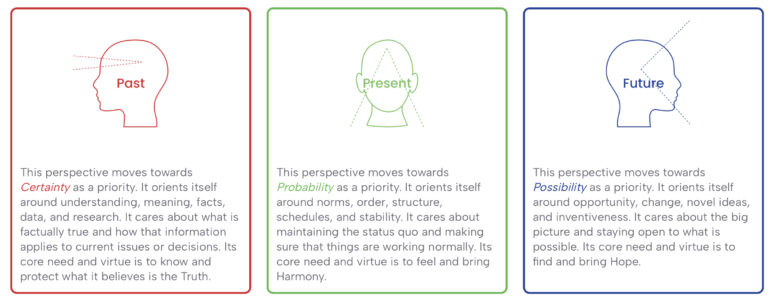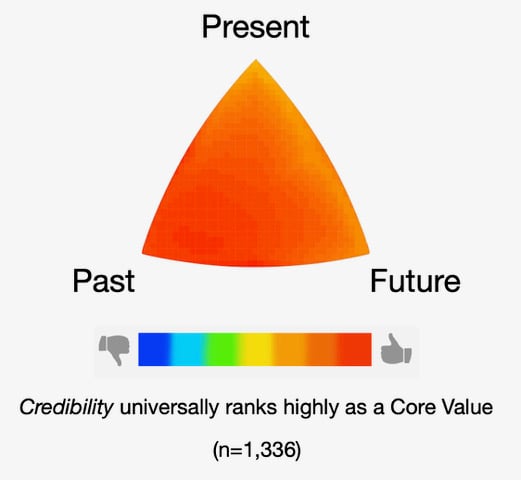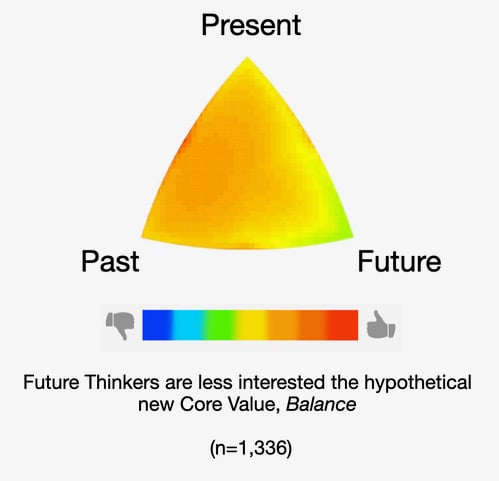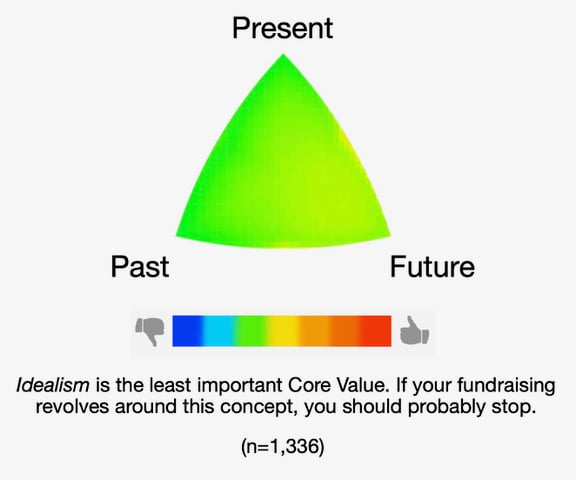Listener Study shines light on improving Core Values fundraising appeals
SPONSORED
By Mike Wallace, Giving Agency
I’ve worked in public media for a long time. 32 years to be specific – almost all that time spent in fundraising. The years pass quickly.
I’ve edited fundraising spots on ¼ inch tape (with a razor blade); witnessed the birth of online giving; rode the Great PTV Fundraising Wave of the late 90’s; shook my head while political pundits repeatedly threatened to zero-out CPB funding; witnessed multiple rise and fall cycles of Less Fundraising, More Programming and its cousins – the Un-drive, Silent Drive, Power Hour.
I’ve watched results spike following the 9/11 attacks; watched them drop during the Great Recession; and watched them spike again during the Trump administration and COVID lockdowns of mid-2020. I’m still waiting for someone at a station to crack the code with social media fundraising. Maybe then I’ll finally get a social media account.
A lot about public radio fundraising has changed in 32 years, except one of the most important things: how we talk about our Core Values.
Public Radio’s Core Values were presented to the system by PRPD in 2000. Back then we needed a better way to talk about the value public radio brings to communities around the country, and these did the trick.
Those same Core Values from 2000 are still solid. But as an industry we’ve never put much effort into how we might adapt the conversation about Core Values to better align with the expectations of today’s listeners.
Think about it: it’s been nearly 25 years since we first started talking about Core Values in our fundraising, and not much has changed. No wonder listeners are bored with pledge drives.
Why is it that public radio accepts that it has a paid-to-free ratio of around 10%, when brands such as LinkedIn and Spotify enjoy rates of 30% and 40%, respectively? Public radio certainly offers more value.
We (Giving Agency) just finished a pilot study with six stations that suggests there’s a path to improving station fundraising at the local level. It involves understanding the Thinking Style of a station’s audience. And every station audience is unique.
How we got here
Last Spring, we commissioned Edison Research to conduct in-depth interviews with millennial listeners from two stations – Boise State Public Radio and WUNC/Chapel Hill. We wanted to know if there was any difference between how these millennial listeners feel about Public Radio’s Core Values.
The findings from these interviews were shared at PRPD23 last September and at follow-up webinar in October. Eric Nuzum, who presented the findings, also wrote a companion piece in Current.
One of the takeaways from the study was that while these millennials felt that most of Core Values were still important, they had different reasons for expressing why they felt that way.
Our next step: Ask more listeners
These interviews with listeners led to conversations with stations and system leaders about the need to validate these findings with an online survey, so we could ask more listeners the same kinds of questions we asked during the interviews.
We teamed up with six stations: Boise State Public Radio, KPOV, Vermont Public, WFIT, WOMR, and WTJU to send a survey to listeners. More than 1,300 participated.
What we asked
The online survey asked listeners how they felt about 14 qualities of public radio. Eight of these were from the original Core Value 2000 set, and six were inspired from the original interviews with millennial listeners.
We also incorporated a series of questions designed by the MindTime Foundation. MindTime® offers a scientifically proven theory to explain WHY people behave the way they do and provides insights on the kind of information a person needs to make decisions. Their model explains, for example, why, as a “Future Thinker,” I often tune out when I hear a station ask for donations during a member drive based on their financial goals. But when the pitch turns to imagining what could be if the station has enough funding, I’m all in.
Finding #1: Core Values are not equal
Listeners across the six stations in the pilot generally feel the same about each of the 14 Core Values presented to them.
When asked how important each Core Value is to them personally on a scale of 1-100, listeners ranked Credibility and Honesty the highest, both averaging an “importance” score of 92 out of 100. At the bottom of the list, Idealism. It averaged an importance score of just 60 out of 100.
The other 11 Core Values fell somewhere in-between. But that’s only part of the picture.
Finding #2: If you think your audience is different, you’re probably right
This is where the inclusion of MindTime® really opened our eyes. It showed how different one station’s audience can be from another, in terms of group Thinking Style.
This is powerful stuff. Knowing the Thinking Style of your audience offers a path to more effective communication, including fundraising.
According to MindTime’s® research, each of us blend certain characteristics of “Past, Present and Future Thinking.” Unlike results from personality tests you may have taken, Thinking Style is stable. Your Thinking Style can predict how you’ll respond to, for example, a fundraising message.
As a personal example, this explains why, as a Future Thinker, I pay attention to fundraising appeals that emphasize vision and are inventive, and why I tune out appeals based on financial need, data, or proof of impact.

Here are three examples from the pilot study showing how Thinking Styles can differ among stations:
- Boise State Public Radio has a higher share of Present Thinkers compared to the pilot group.
- WFIT/Melbourne has a higher share of Past Thinkers compared to the pilot group.
- Vermont Public has a Thinking Style mix that closely aligns with the pilot group.
Knowing the dominant Thinking Style of your audience (or ideally, the Thinking Style of individual audience members) offers a scientifically validated way to frame fundraising (and pretty much anything else) around core values.
“We’re excited to dig into all of the details and really drill into the differences by generation so that we can better tailor our messaging based on platform and generation. My team has already started pulling out keywords for each of our main thinking styles and working them into scripts for our spring drive.” –
Kristin Jackson, Director of Development, Boise State Public Radio
Finding #3: Thinking Style shapes our perception of how important Core Values are
The research team at MindTime® used a series of heat maps to illustrate how Core Values resonate with Past, Present, and Future thinkers.
For example, take the Core Value of Crediblity. Blue indicates minimal resonance, red indicated strong resonance, and yellow represents a more neutral resonance.
Credibility, one of the original Core Values, strongly appeals to all three Thinking Styles:
Credibility

The quality of Balance, a hypothetical new Core Value identified in the original interviews with millennials, has equal appeal to Past and Present Thinkers, but doesn’t resonate with Future Thinkers:
Balance

The quality of Idealism, one of the original Core Values, is pretty much a non-starter for Past, Present and Future Thinkers, and across all age groups:
Idealism

Your next step: Sign up!
We’re preparing for the next round of listener surveys, scheduled to be sent out in April. We invite your station to join us!
Participating stations receive a unique survey link, a custom report detailing your listeners’ unique mix of Thinking Styles compared to the national sample; insights on how responses differ by age group; and guidance on how to apply the findings to your fundraising and communication efforts. Public Media Content Collective formerly (PRPD) and National Federation of Community Broadcasters (NFCB) member stations receive a discount.
To participate, or for more information, click here.
Many thanks to PMCC and NFCB for their help spreading the word to their member stations about this pilot. And special thanks to Boise State Public Radio, KPOV, Vermont Public, WFIT, WOMR, and WTJU for participating in the pilot study.

Mike Wallace is Senior Director of Consulting and Strategy at CARS, where co-manages Giving Agency, the membership fundraising consulting division. He’s helped dozens of stations improve on-air fundraising and lives in San Diego, CA.


